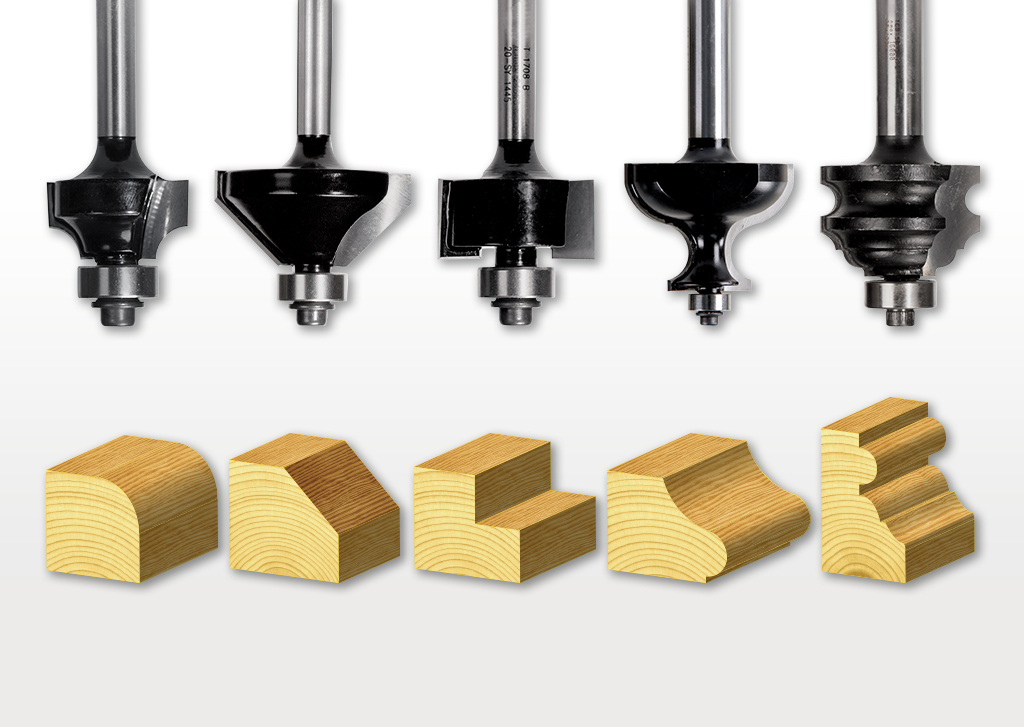Edge & Face Forming Bits: What They Are and How to Choose the Right One
25.03.2021

Edge and face forming bits can add some real colour to the project you’re working on – however, like many things in life, the most difficult part is finding out where to start. We’ve put together this guide to offer some insight on how to find the right one for you, and how to get the most out of it.
What They Are, and What They Do
Edge & face forming bits are mostly used for cutting decorative edges on a workpiece such as a picture frame or tabletop. In this, they differ from other parts of your arsenal such as joining bits, which are used to form strong joints in timber woodworking.
This guide gives a more in-depth breakdown of the different types of router bits, including edge and face forming bits. The decorative edges these bits can offer varies hugely, but includes round over edges (more on them later), coves, classical, beads, and many more.
Beginner’s Luck
One of the standout benefits of edge & face forming bits is that they are accessible and well-suited for beginners to woodworking, yet can still produce a beautiful finish. Once you’ve selected your workpiece and know the finish you’re aiming for, it can be as simple as selecting the right router bit for the job, and you can get your DIY workshop producing finishes a seasoned professional would be proud of.
We’ve already taken a look at how to get the most out of your router bits before on our blog, but it’s well worth revisiting for any new or aspiring DIY demon.
Rounding Over Bits
Now let’s take a closer look at a specific type of edge and face forming bit. The rounding over bit, also sometimes known as a roundover bit, gives your workpiece a smooth, rounded edge. These edges are great for dressers or tabletops. They also tend to last longer, as rounded edges are less likely to sustain damage from being banged into.
Rounded edges are also often safer around the home. We all know the pain of bumping an elbow on the corner of a table, and rounded edges are much safer than sharp corners for those with young kids tearing around the house at top speed.
Chamfer Bits
Another way to remove sharp corners is with a chamfer bit. Chamfering bits remove the sharp corners on your workpiece by creating a bevelled edge. 45-degree chamfer bits are the most popular, however they are also readily available in a range of degrees such as 5, 10, 30 and 65, as well as many more.
While these are not quite as child friendly as their roundover counterparts, chamfering bits still remove those sharp edges on timber (and many other workpieces). They’re perfect for adding a finishing touch to blocks of wood that would otherwise have four flat edges.
Safety First
As with any piece of woodworking machinery, it is imperative to be safe while you work. Edge and face forming bits have no bearing guide, which enables the shape to essentially guide itself. This is a great level of freedom if you’re an experienced woodworker with a steady hand, but if you’re a beginner it is a good idea to use templates while you work.
Templates and safety-jigs not only guide your work and protect you from unwanted imperfections, but protect your hands from a bit spinning at incredible speed.
Don’t get mistaken for thinking using templates will rob you of your creativity, though! This article shows some of the benefits of working with templates or a fence as a guide while you work to create some truly beautiful work.
We hope this guide has given you a good introduction to edge and face forming bits. If you’re feeling ready to use them to your advantage, consult our full range and enjoy Australia-wide delivery.
